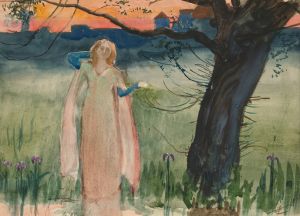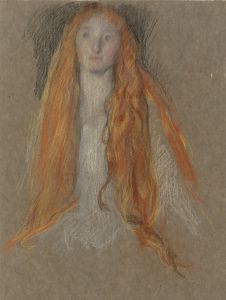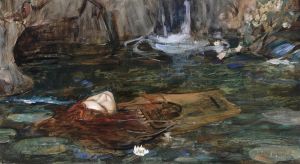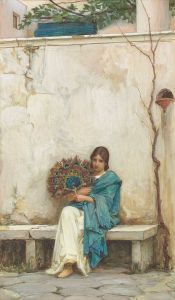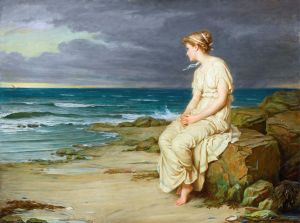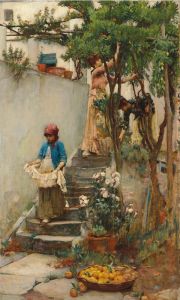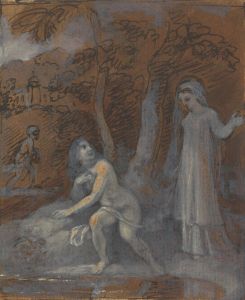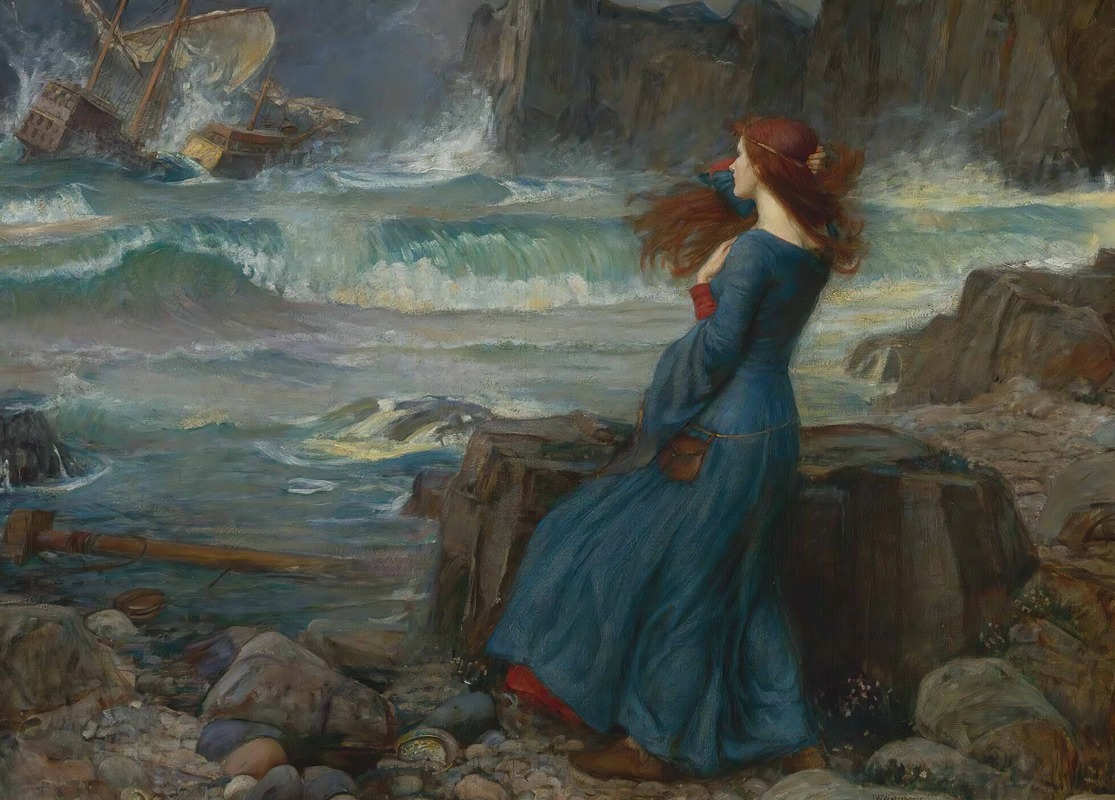
Miranda-The Tempest
A hand-painted replica of John William Waterhouse’s masterpiece Miranda-The Tempest, meticulously crafted by professional artists to capture the true essence of the original. Each piece is created with museum-quality canvas and rare mineral pigments, carefully painted by experienced artists with delicate brushstrokes and rich, layered colors to perfectly recreate the texture of the original artwork. Unlike machine-printed reproductions, this hand-painted version brings the painting to life, infused with the artist’s emotions and skill in every stroke. Whether for personal collection or home decoration, it instantly elevates the artistic atmosphere of any space.
John William Waterhouse's painting "Miranda – The Tempest" is an evocative artwork inspired by William Shakespeare's play "The Tempest." Created in 1916, this painting is one of Waterhouse's later works and reflects his continued fascination with literary and mythological themes. Waterhouse, a prominent figure in the Pre-Raphaelite movement, is renowned for his ability to blend classical subjects with a romantic sensibility, and "Miranda – The Tempest" is a testament to his skill in capturing the essence of Shakespearean drama.
The painting depicts Miranda, one of the central characters in "The Tempest," who is the daughter of Prospero, the rightful Duke of Milan. In the play, Miranda has lived most of her life on a remote island, where her father has been exiled. The scene Waterhouse chose to illustrate is one of the play's most iconic moments: Miranda watching the shipwreck orchestrated by her father to bring his usurping brother and other nobles to the island. This event sets the stage for the unfolding drama and eventual reconciliation.
In Waterhouse's depiction, Miranda stands on the rocky shore, gazing out at the turbulent sea. Her expression is one of concern and empathy, capturing her compassionate nature as described in Shakespeare's text. The artist's use of color and light enhances the emotional impact of the scene. The swirling waves and stormy sky create a dramatic backdrop, emphasizing the chaos and power of the natural elements, which are central themes in "The Tempest."
Waterhouse's attention to detail is evident in the rendering of Miranda's flowing garments and the windswept landscape. The choice of colors—muted earth tones contrasted with the dark, churning sea—adds to the painting's atmospheric quality. This careful composition draws the viewer into Miranda's world, allowing them to experience the tension and anticipation of the moment.
"Miranda – The Tempest" is a fine example of Waterhouse's ability to convey narrative through visual art. His interpretation of Miranda is both faithful to Shakespeare's character and imbued with his own artistic vision. The painting reflects the broader themes of "The Tempest," such as the interplay between nature and magic, the complexities of human emotion, and the possibility of redemption and forgiveness.
Waterhouse's work is often associated with the Pre-Raphaelite Brotherhood, a group of artists who sought to return to the detail, intense colors, and complex compositions of pre-Renaissance art. Although Waterhouse was not an original member, his style and thematic choices align closely with their ideals. His paintings frequently explore themes of mythology, literature, and the feminine, often featuring strong, emotive female figures.
"Miranda – The Tempest" is housed in a private collection, making it less accessible to the public compared to some of Waterhouse's other works. However, it remains an important piece within his oeuvre, illustrating his enduring engagement with literary subjects and his mastery of the Pre-Raphaelite style. Through this painting, Waterhouse invites viewers to reflect on the timeless nature of Shakespeare's work and the enduring power of art to capture the human experience.





